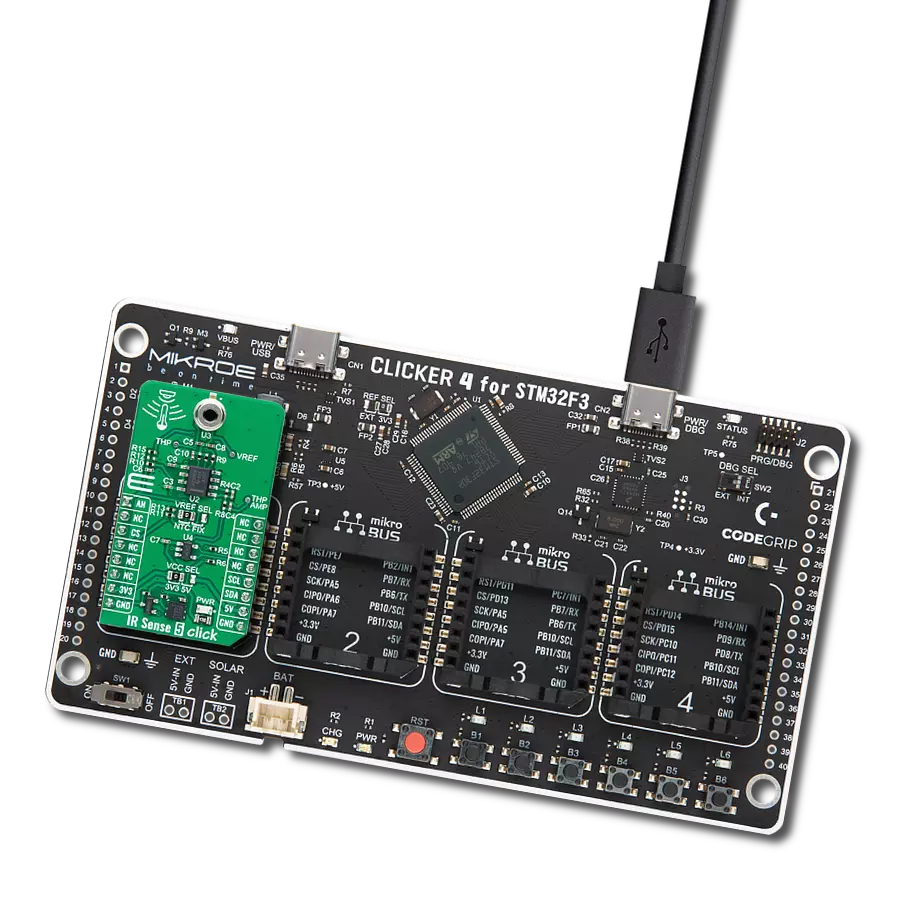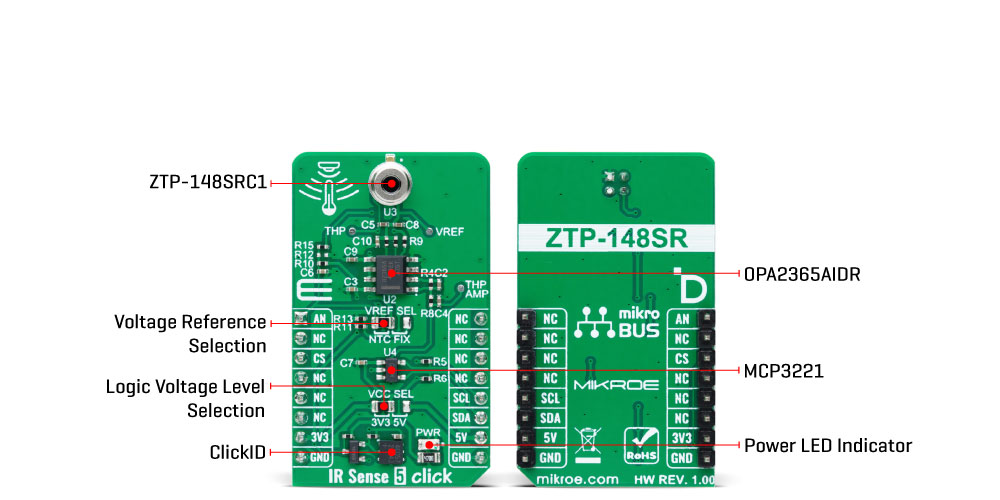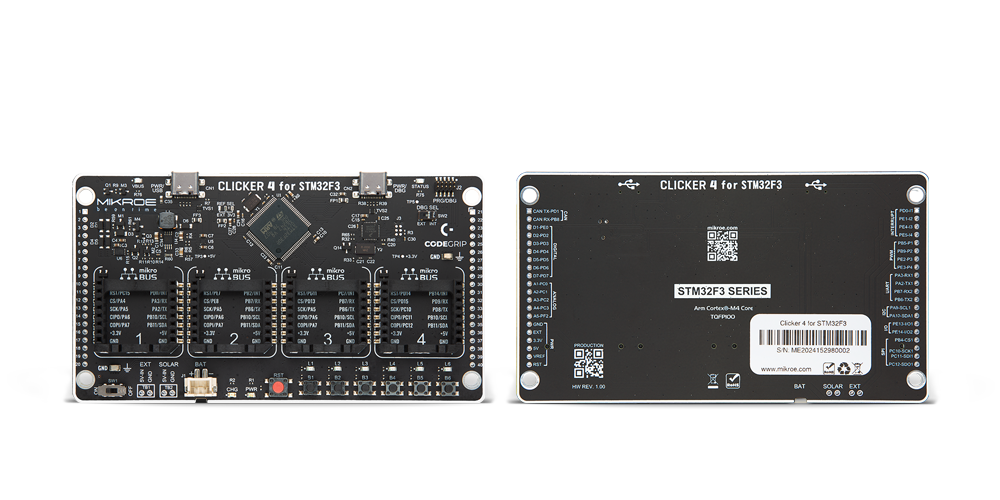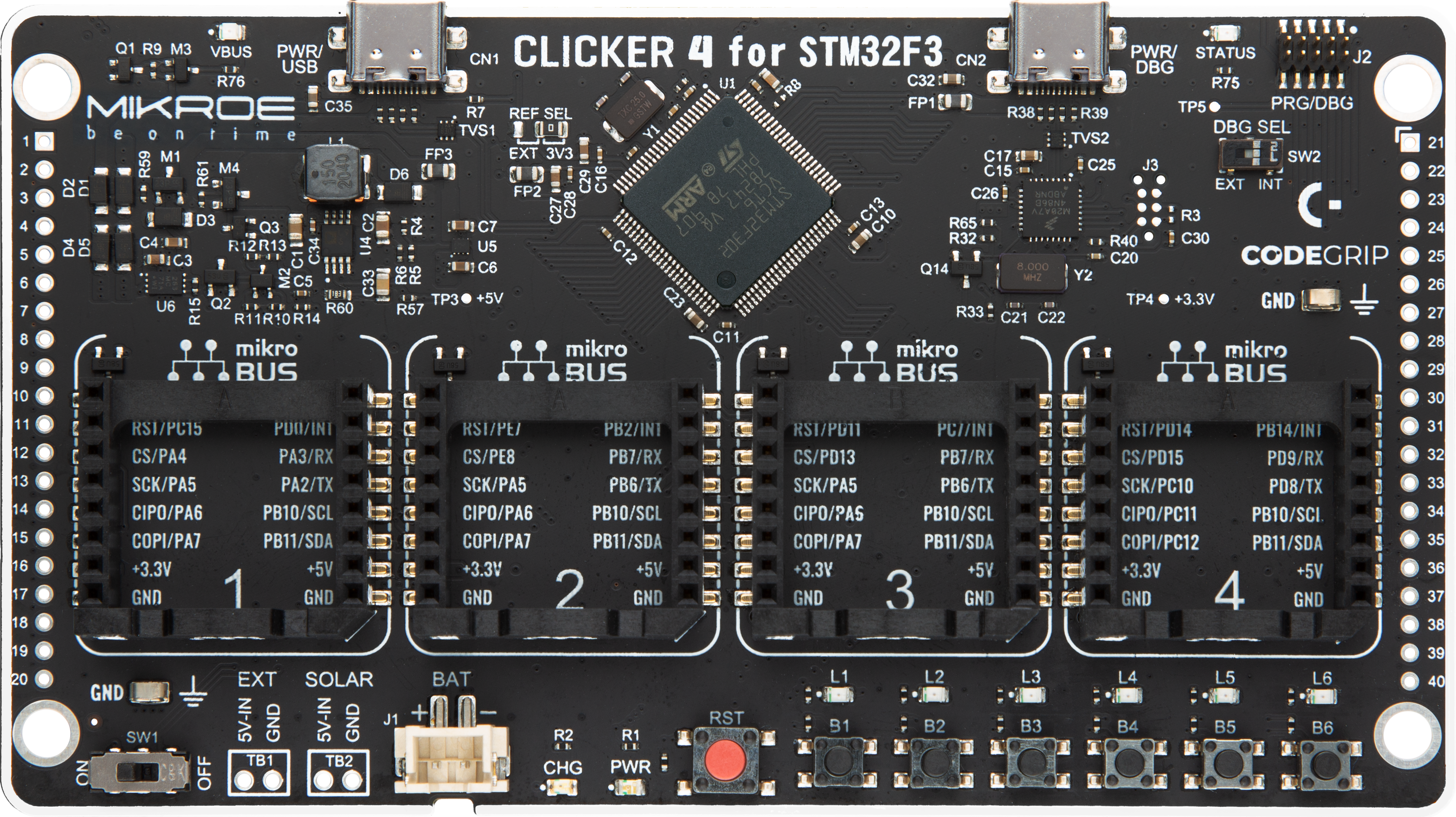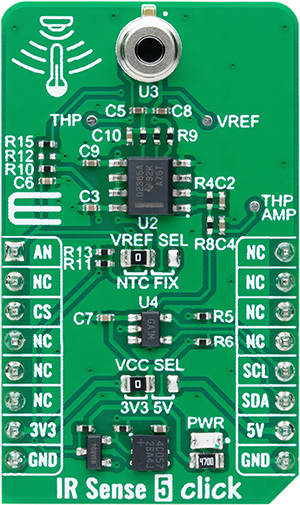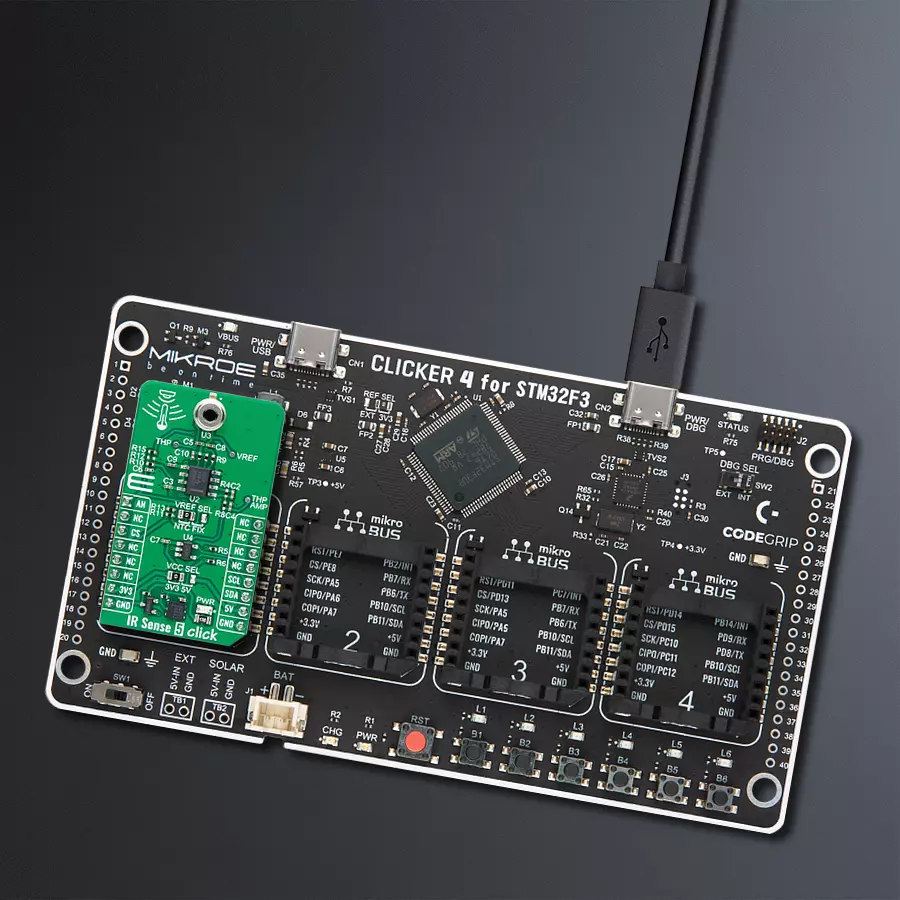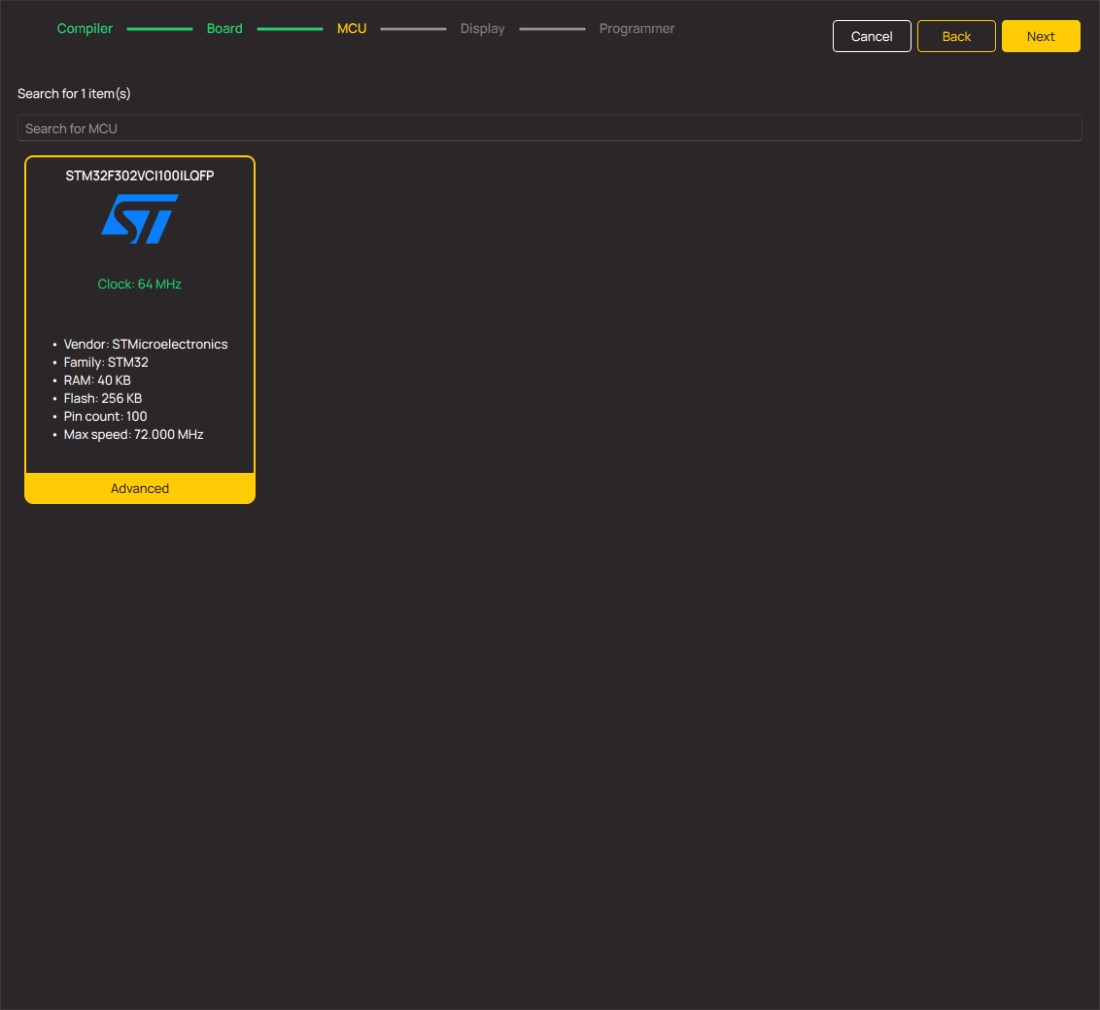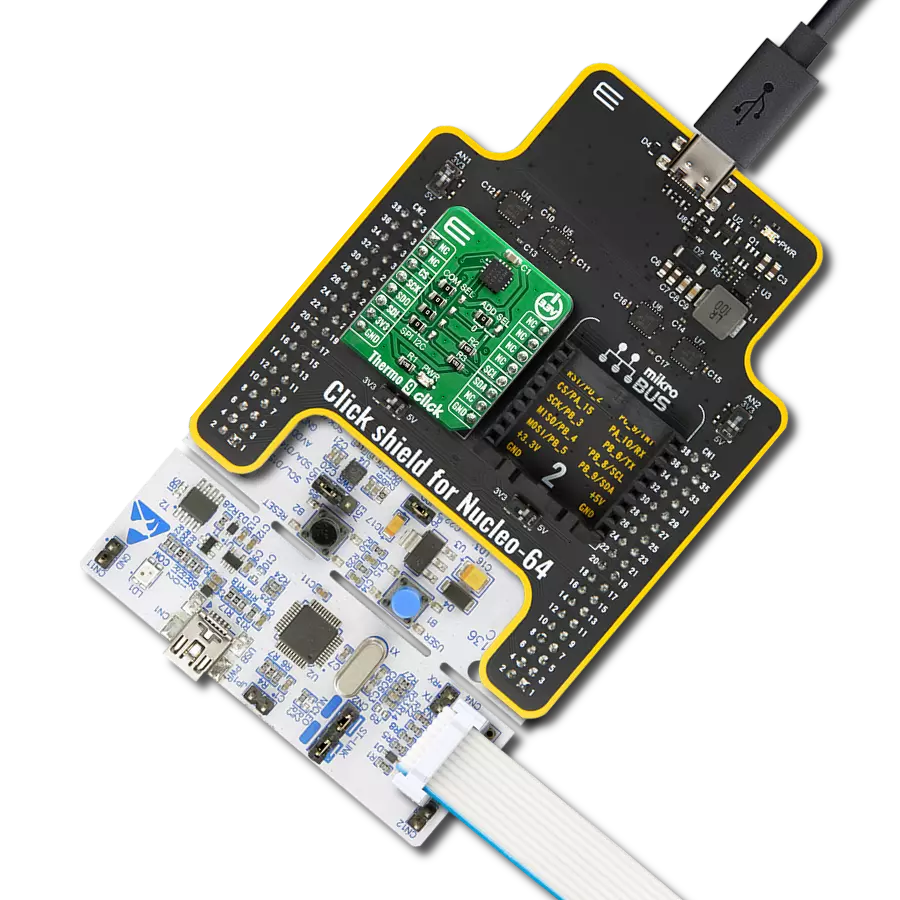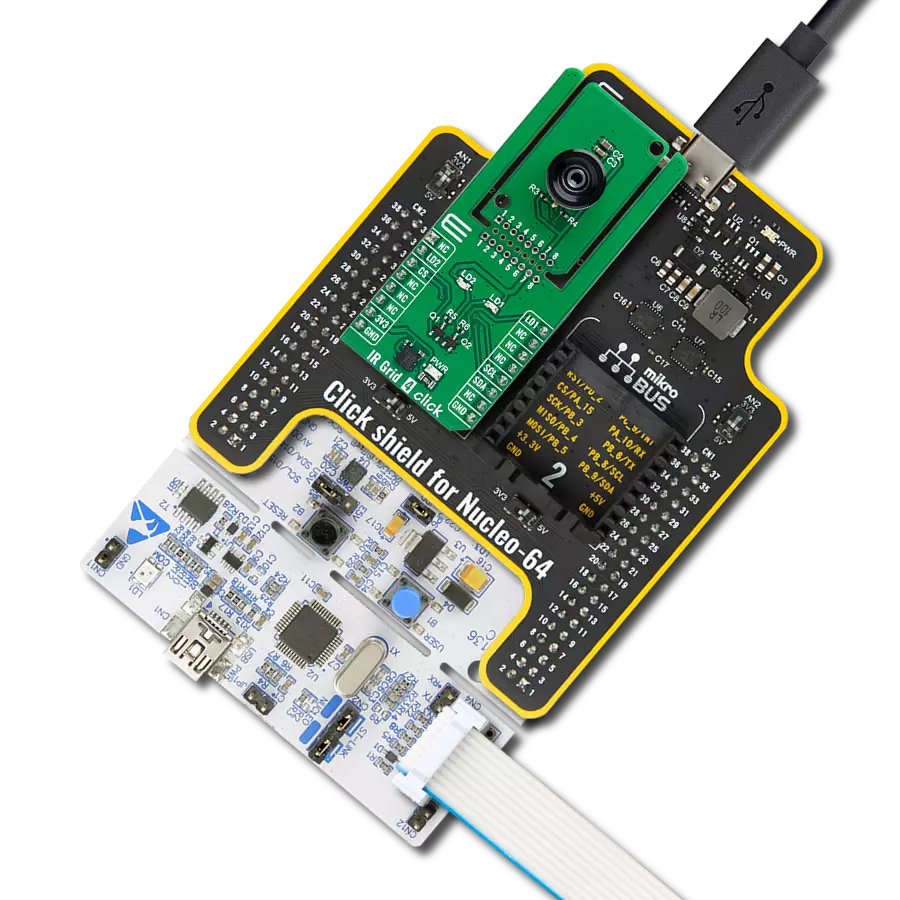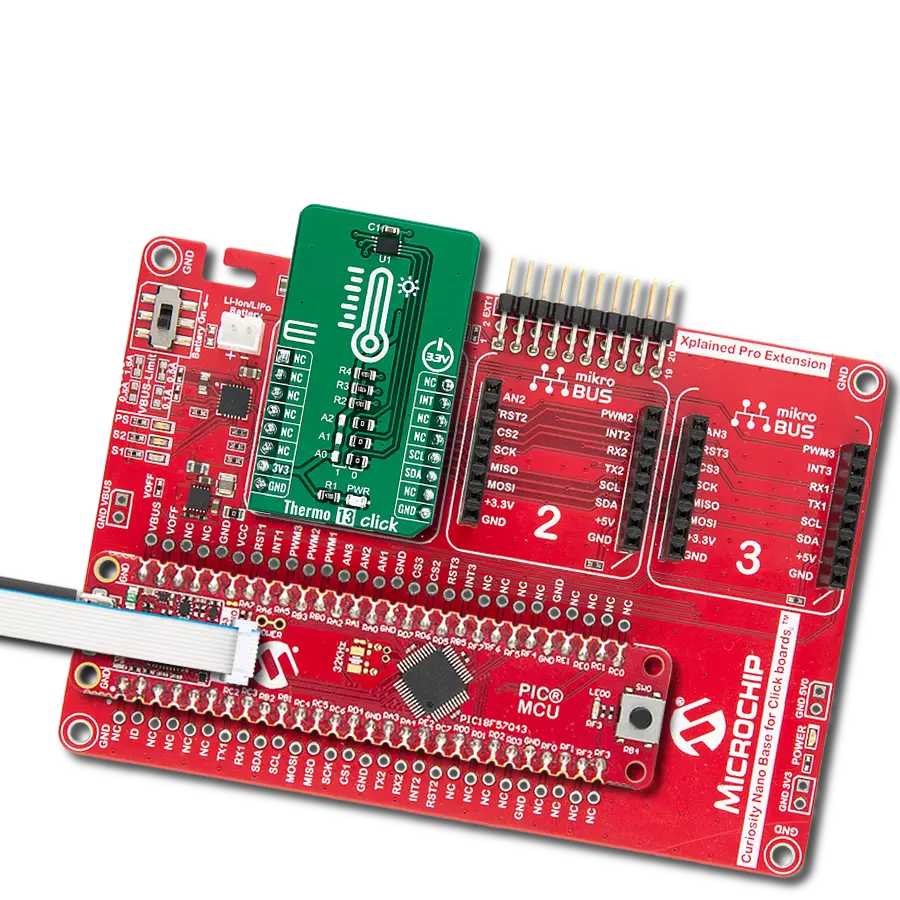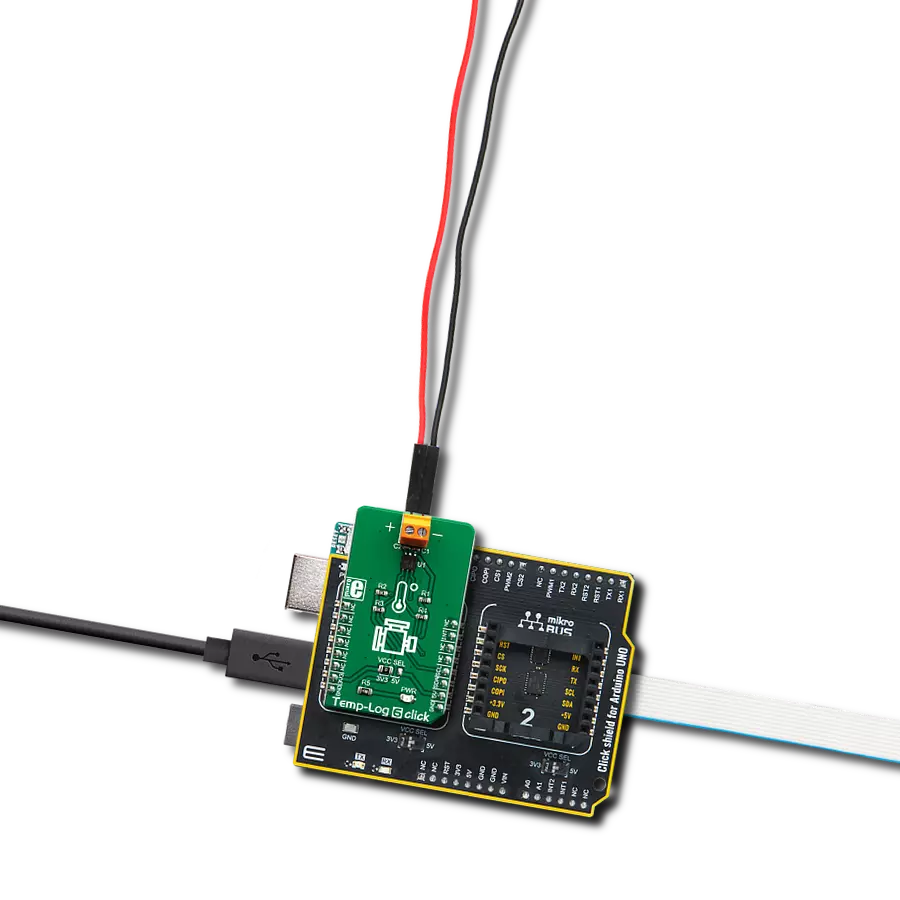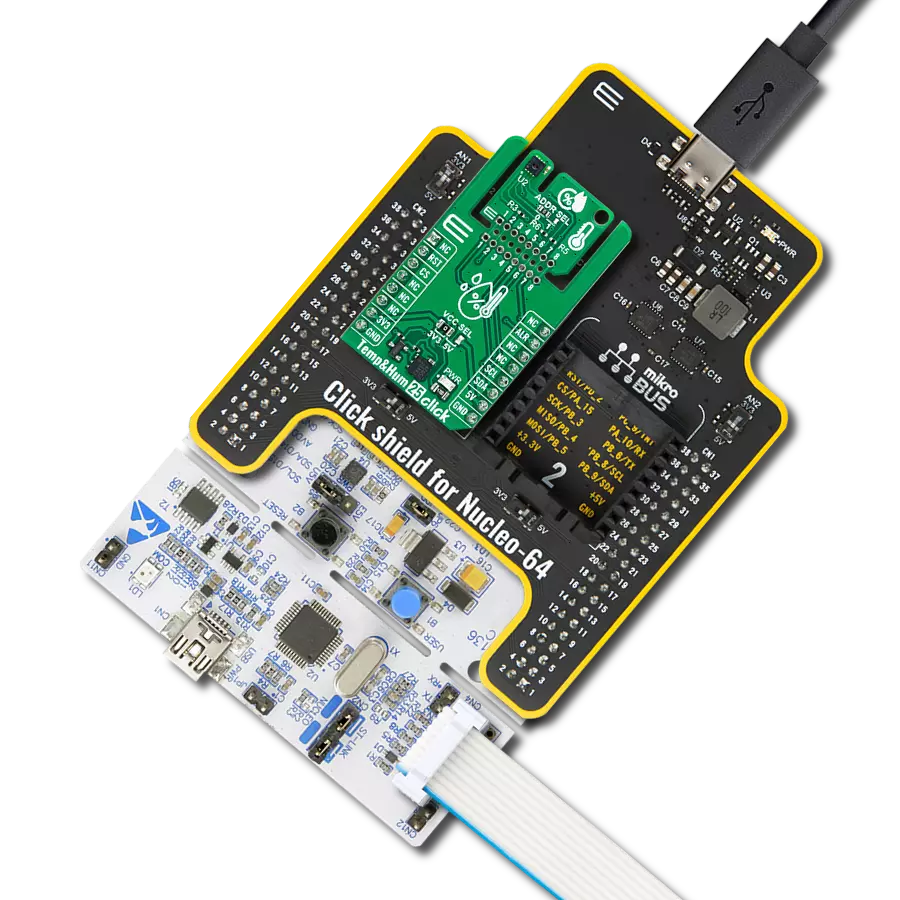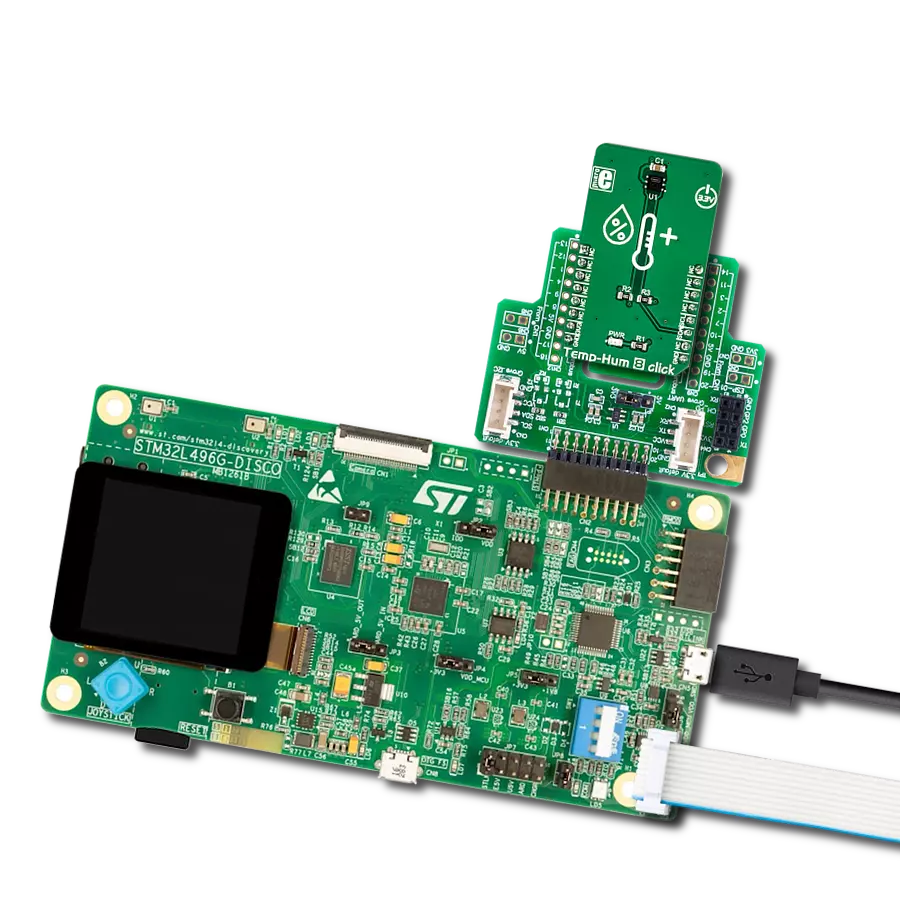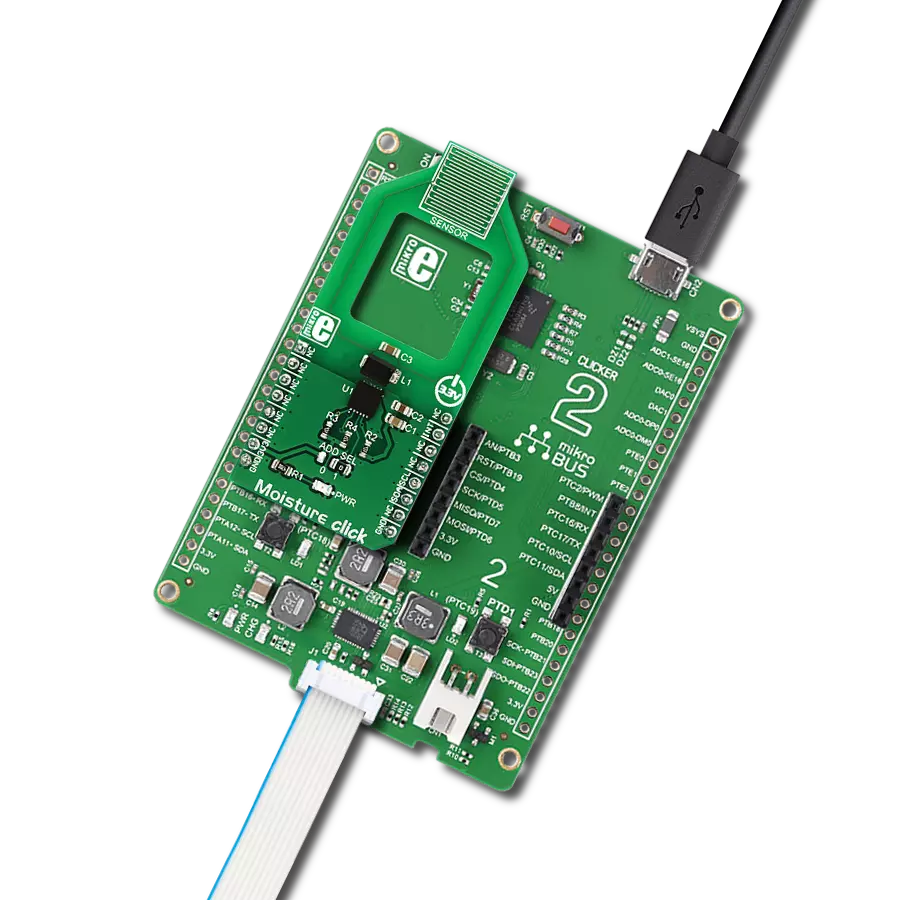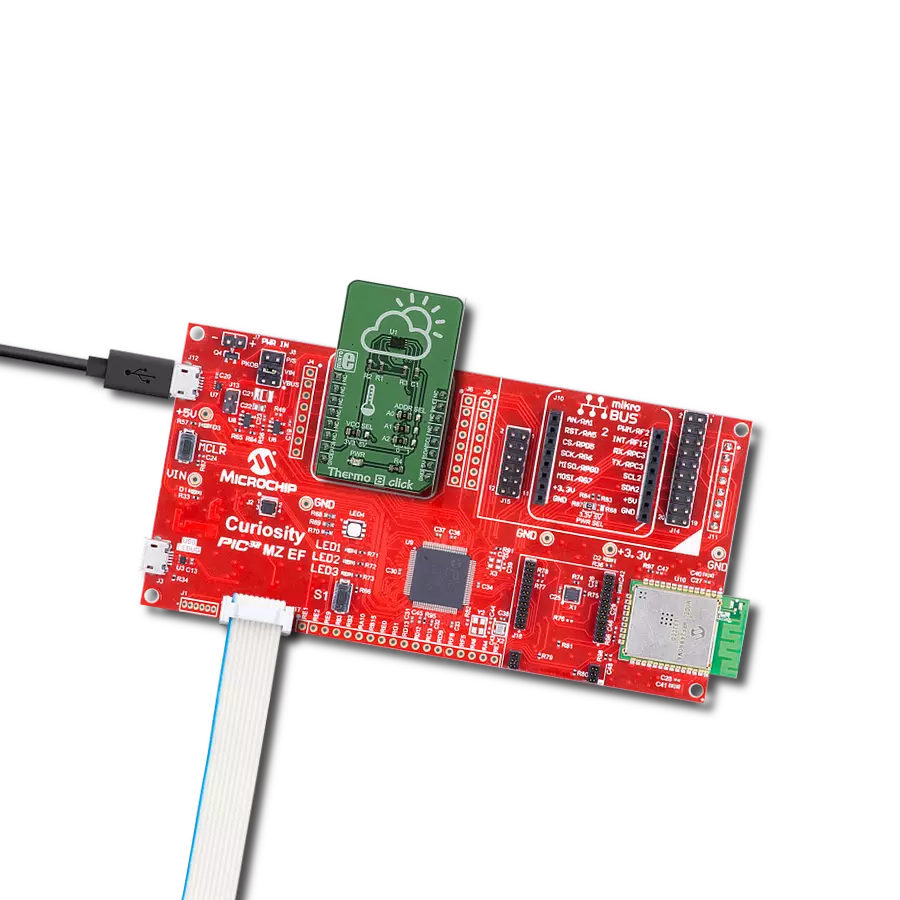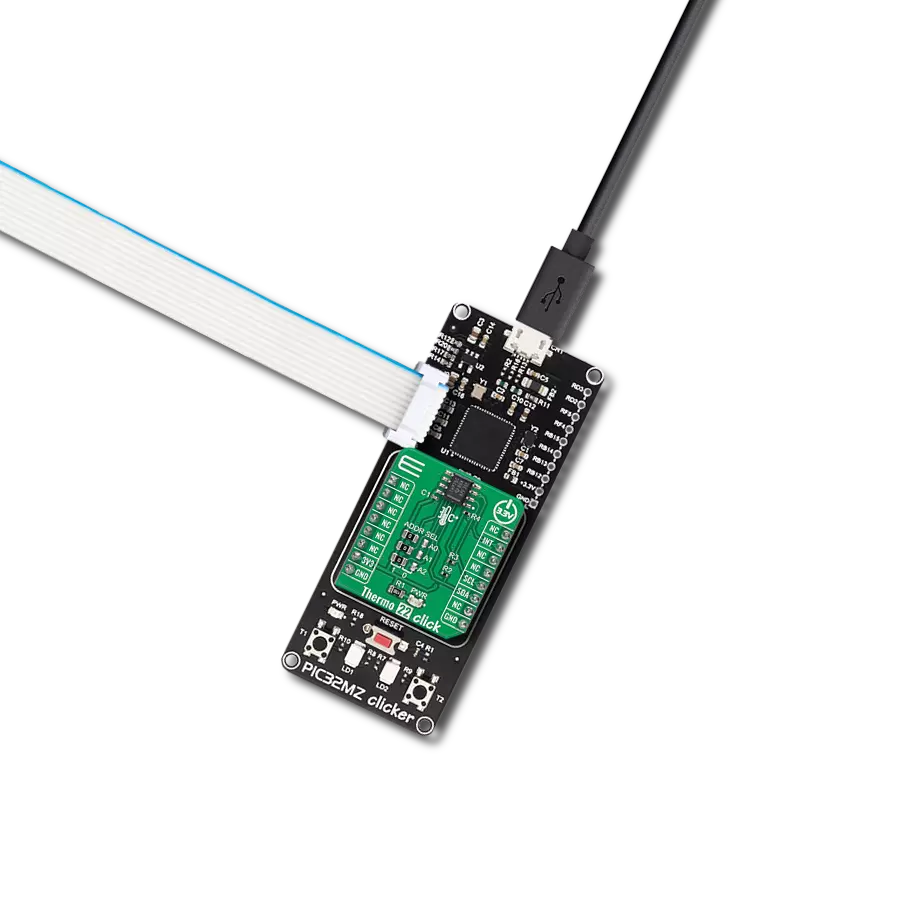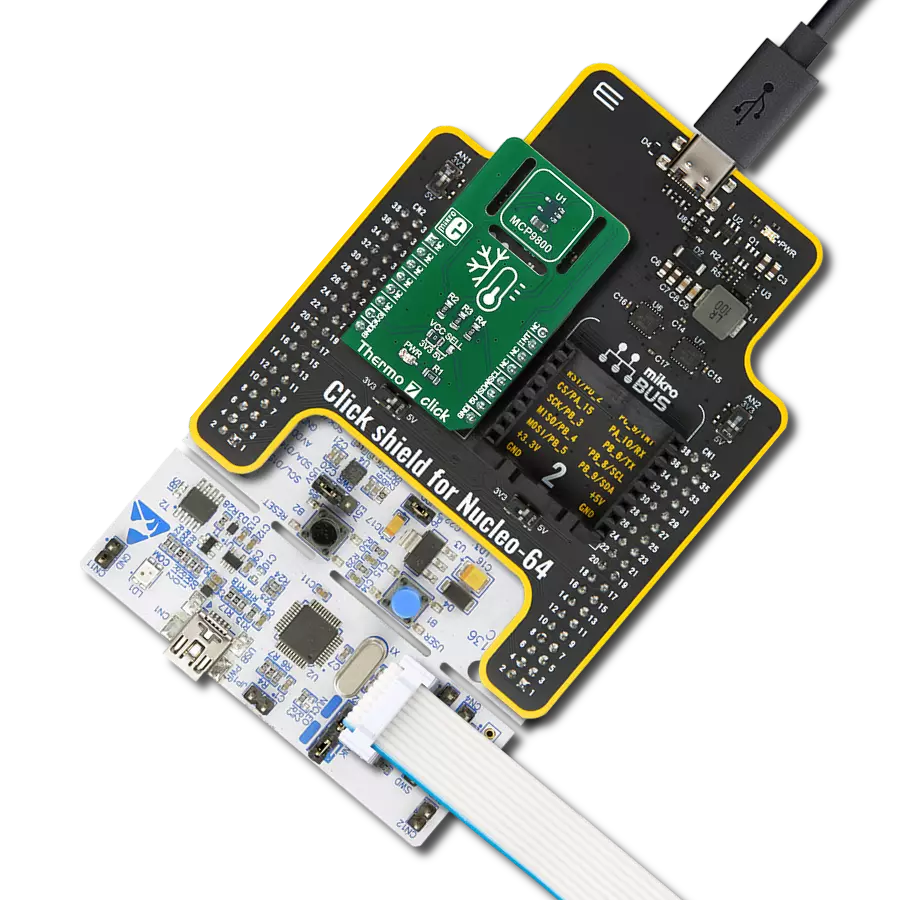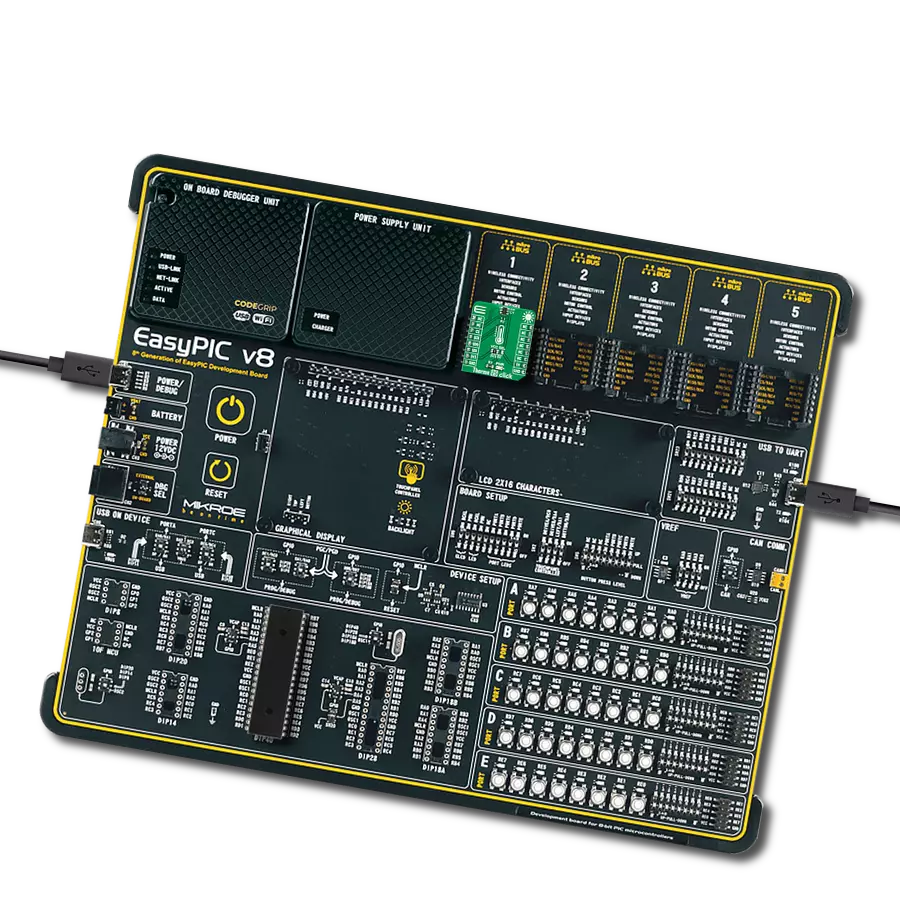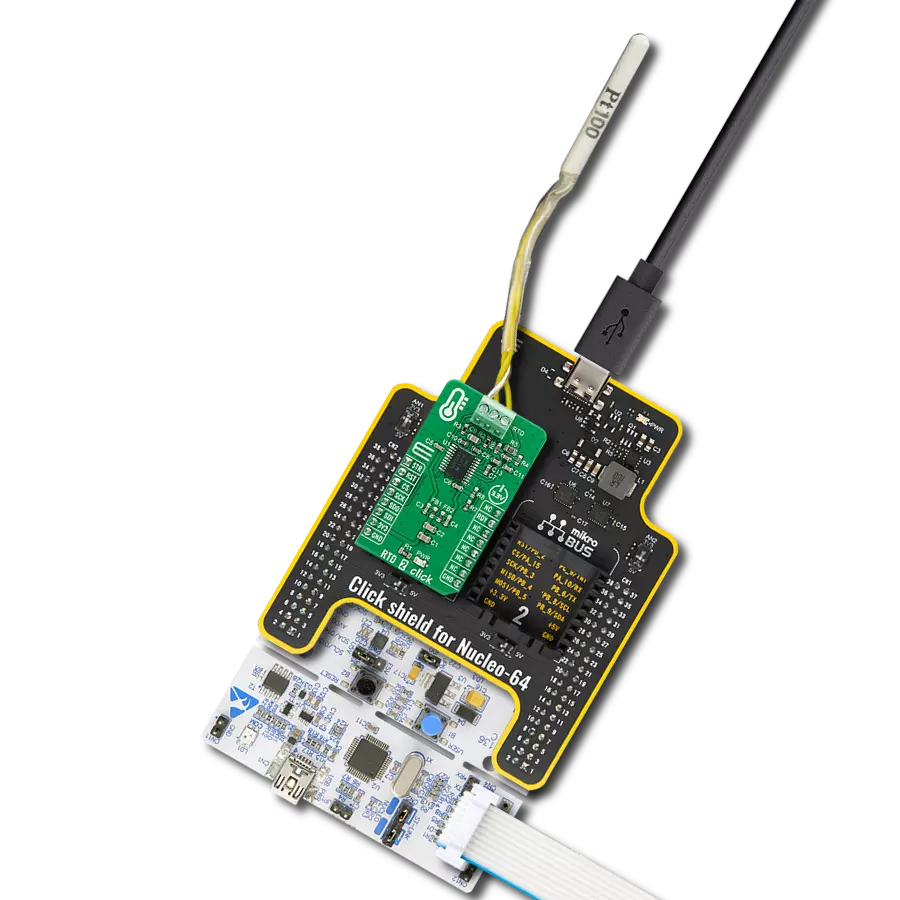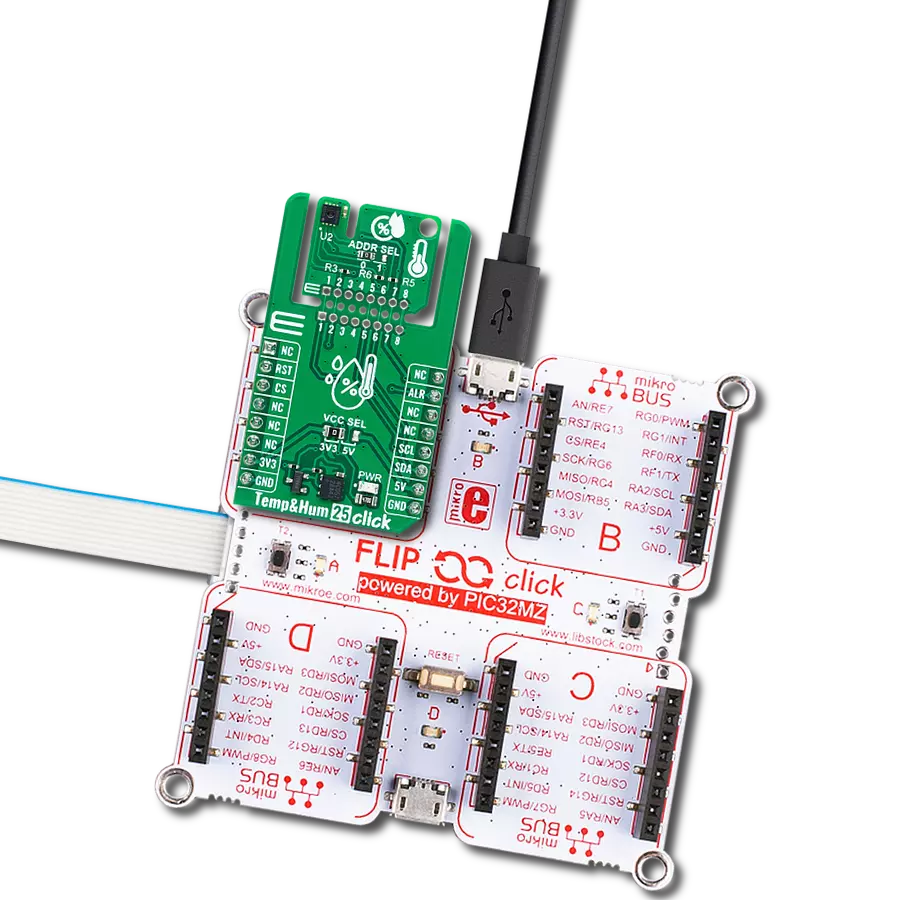Measure surface temperature within a range of -20 to +100°C without physically touching the object
A
A
Hardware Overview
How does it work?
IR Sense 5 Click is based on the ZTP-148SRC1, a thermopile IR sensor from Amphenol. This infrared thermopile sensor is designed for non-contact surface temperature measurement, offering a stable response to DC radiation. The ZTP-148SRC1 can measure temperatures from -20 to +100°C, featuring an active area of 0.7x0.7mm² and a typical field of view (FoV) of 85 degrees. The sensor consists of thermo-elements, a flat IR filter, and a thermistor for temperature compensation, all housed in a hermetically sealed TO package. Its typical applications include human thermometry, non-contact temperature measurement, home appliances such as air conditioners, occupancy detection, HVAC systems, automotive applications, and various other uses. As mentioned, the ZTP-148SRC1 features a high-sensitivity thermopile
with a rapid response time and an integrated thermistor for precise ambient temperature compensation. As an analog-output sensor, it utilizes the OPA2365AIDR OpAmp to amplify the thermopile's analog output voltage. This amplified signal is then digitized via the I2C interface using the MCP3221 analog-to-digital converter. This board also has an output offset selection achieved via the VREF SEL jumper. Selection is made between a fixed offset value of 200mV, generated by a voltage divider (R11 and R13 resistors) or from the ZTP-148SRC1's thermistor output. This offset is crucial for signal conditioning, ensuring the sensor's output is within the optimal range for further processing and improving measurement accuracy by compensating for ambient temperature variations. Besides, the thermistor's value can be
monitored through the AN pin of the mikroBUS™ socket. The board also includes three test points for signals from the ZTP-148SRC1: the raw signal from the thermopile on TP2, the selected voltage reference at TP3, and the amplified signal from the OPA2365AIDR on TP1. These test points allow consistent prototyping and testing. This Click board™ can operate with either 3.3V or 5V logic voltage levels selected via the VCC SEL jumper. This way, both 3.3V and 5V capable MCUs can use the communication lines properly. Also, this Click board™ comes equipped with a library containing easy-to-use functions and an example code that can be used as a reference for further development.
Features overview
Development board
Clicker 4 for STM32F3 is a compact development board designed as a complete solution, you can use it to quickly build your own gadgets with unique functionalities. Featuring a STM32F302VCT6, four mikroBUS™ sockets for Click boards™ connectivity, power managment, and more, it represents a perfect solution for the rapid development of many different types of applications. At its core, there is a STM32F302VCT6 MCU, a powerful microcontroller by STMicroelectronics, based on the high-
performance Arm® Cortex®-M4 32-bit processor core operating at up to 168 MHz frequency. It provides sufficient processing power for the most demanding tasks, allowing Clicker 4 to adapt to any specific application requirements. Besides two 1x20 pin headers, four improved mikroBUS™ sockets represent the most distinctive connectivity feature, allowing access to a huge base of Click boards™, growing on a daily basis. Each section of Clicker 4 is clearly marked, offering an intuitive and clean interface. This makes working with the development
board much simpler and thus, faster. The usability of Clicker 4 doesn’t end with its ability to accelerate the prototyping and application development stages: it is designed as a complete solution which can be implemented directly into any project, with no additional hardware modifications required. Four mounting holes [4.2mm/0.165”] at all four corners allow simple installation by using mounting screws. For most applications, a nice stylish casing is all that is needed to turn the Clicker 4 development board into a fully functional, custom design.
Microcontroller Overview
MCU Card / MCU
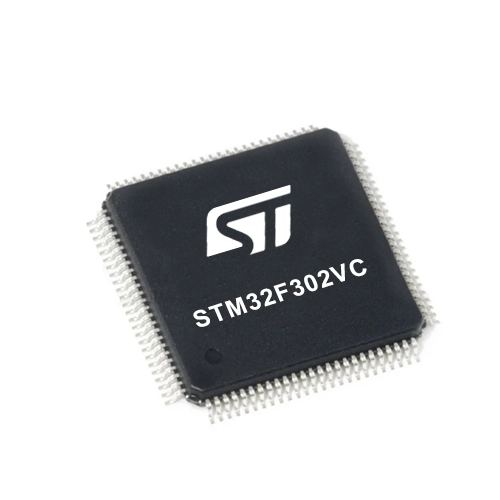
Architecture
ARM Cortex-M4
MCU Memory (KB)
256
Silicon Vendor
STMicroelectronics
Pin count
100
RAM (Bytes)
40960
Used MCU Pins
mikroBUS™ mapper
Take a closer look
Click board™ Schematic

Step by step
Project assembly
Software Support
Library Description
This library contains API for IR Sense 5 Click driver.
Key functions:
irsense5_get_obj_temp- This function reads and calculate object temperature in degree Celsius [degC].irsense5_get_amb_temp- This function reads and calculate ambient temperature in degree Celsius [degC].irsense5_read_raw_adc_thm- This function reads the thermistor raw ADC value.
Open Source
Code example
The complete application code and a ready-to-use project are available through the NECTO Studio Package Manager for direct installation in the NECTO Studio. The application code can also be found on the MIKROE GitHub account.
/*!
* @file main.c
* @brief IR Sense 5 Click Example.
*
* # Description
* This library contains API for the IR Sense 5 Click driver
* for measuring ambient and object temperature.
*
* The demo application is composed of two sections :
*
* ## Application Init
* The initialization of the I2C and ADC module and log UART.
*
* ## Application Task
* The demo application measures ambient and object temperature in degrees Celsius.
* Results are being sent to the UART Terminal, where you can track their changes.
*
* @author Nenad Filipovic
*
*/
#include "board.h"
#include "log.h"
#include "irsense5.h"
static irsense5_t irsense5; /**< IR Sense 5 Click driver object. */
static log_t logger; /**< Logger object. */
void application_init ( void )
{
log_cfg_t log_cfg; /**< Logger config object. */
irsense5_cfg_t irsense5_cfg; /**< Click config object. */
/**
* Logger initialization.
* Default baud rate: 115200
* Default log level: LOG_LEVEL_DEBUG
* @note If USB_UART_RX and USB_UART_TX
* are defined as HAL_PIN_NC, you will
* need to define them manually for log to work.
* See @b LOG_MAP_USB_UART macro definition for detailed explanation.
*/
LOG_MAP_USB_UART( log_cfg );
log_init( &logger, &log_cfg );
log_info( &logger, " Application Init " );
// Click initialization.
irsense5_cfg_setup( &irsense5_cfg );
IRSENSE5_MAP_MIKROBUS( irsense5_cfg, MIKROBUS_1 );
err_t init_flag = irsense5_init( &irsense5, &irsense5_cfg );
if ( ( ADC_ERROR == init_flag ) || ( I2C_MASTER_ERROR == init_flag ) )
{
log_error( &logger, " Communication init." );
for ( ; ; );
}
log_info( &logger, " Application Task " );
}
void application_task ( void )
{
float temperature = 0;
if ( IRSENSE5_OK == irsense5_get_amb_temp ( &irsense5, &temperature ) )
{
log_printf( &logger, " Ambient Temperature: %.2f [degC]\r\n", temperature );
Delay_ms ( 1000 );
}
if ( IRSENSE5_OK == irsense5_get_obj_temp ( &irsense5, &temperature ) )
{
log_printf( &logger, " Object Temperature: %.2f [degC]\r\n\n", temperature );
Delay_ms ( 1000 );
}
}
int main ( void )
{
/* Do not remove this line or clock might not be set correctly. */
#ifdef PREINIT_SUPPORTED
preinit();
#endif
application_init( );
for ( ; ; )
{
application_task( );
}
return 0;
}
// ------------------------------------------------------------------------ END
Additional Support
Resources
Category:Temperature & humidity
